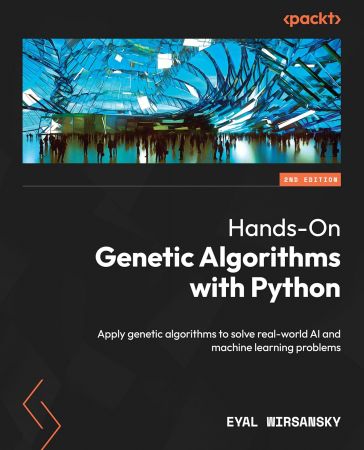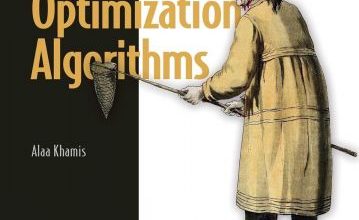Hands-On Genetic Algorithms with Python, 2nd Edition


Hands-On Genetic Algorithms with Python, 2nd Edition
English | 2024 | ISBN: 9781805123798 | 558 pages | True EPUB | 11.89 MB
Hands-On Genetic Algorithms with Python: Apply genetic algorithms to solve real-world AI and machine learning problems, 2nd Edition
Explore the ever-growing world of genetic algorithms to build and enhance AI applications involving search, optimization, machine learning, deep learning, NLP, and XAI using Python libraries
Key Features
Learn how to implement genetic algorithms using Python libraries DEAP, scikit-learn, and NumPy
Take advantage of cloud computing technology to increase the performance of your solutions
Discover bio-inspired algorithms such as particle swarm optimization (PSO) and NEAT
Book Description
Written by Eyal Wirsansky, a senior data scientist and AI researcher with over 25 years of experience and a research background in genetic algorithms and neural networks, Hands-On Genetic Algorithms with Python offers expert insights and practical knowledge to master genetic algorithms.
After an introduction to genetic algorithms and their principles of operation, you’ll find out how they differ from traditional algorithms and the types of problems they can solve, followed by applying them to search and optimization tasks such as planning, scheduling, gaming, and analytics. As you progress, you’ll delve into explainable AI and apply genetic algorithms to AI to improve machine learning and deep learning models, as well as tackle reinforcement learning and NLP tasks. This updated second edition further expands on applying genetic algorithms to NLP and XAI and speeding up genetic algorithms with concurrency and cloud computing. You’ll also get to grips with the NEAT algorithm. The book concludes with an image reconstruction project and other related technologies for future applications.
By the end of this book, you’ll have gained hands-on experience in applying genetic algorithms across a variety of fields, with emphasis on artificial intelligence with Python.
What you will learn
Use genetic algorithms to solve planning, scheduling, gaming, and analytics problems
Create reinforcement learning, NLP, and explainable AI applications
Enhance the performance of ML models and optimize deep learning architecture
Deploy genetic algorithms using client-server architectures, enhancing scalability and computational efficiency
Explore how images can be reconstructed using a set of semi-transparent shapes
Delve into topics like elitism, niching, and multiplicity in genetic solutions to enhance optimization strategies and solution diversity
Who this book is for
If you’re a data scientist, software developer, AI enthusiast who wants to break into the world of genetic algorithms and apply them to real-world, intelligent applications as quickly as possible, this book is for you. Working knowledge of the Python programming language is required to get started with this book.





